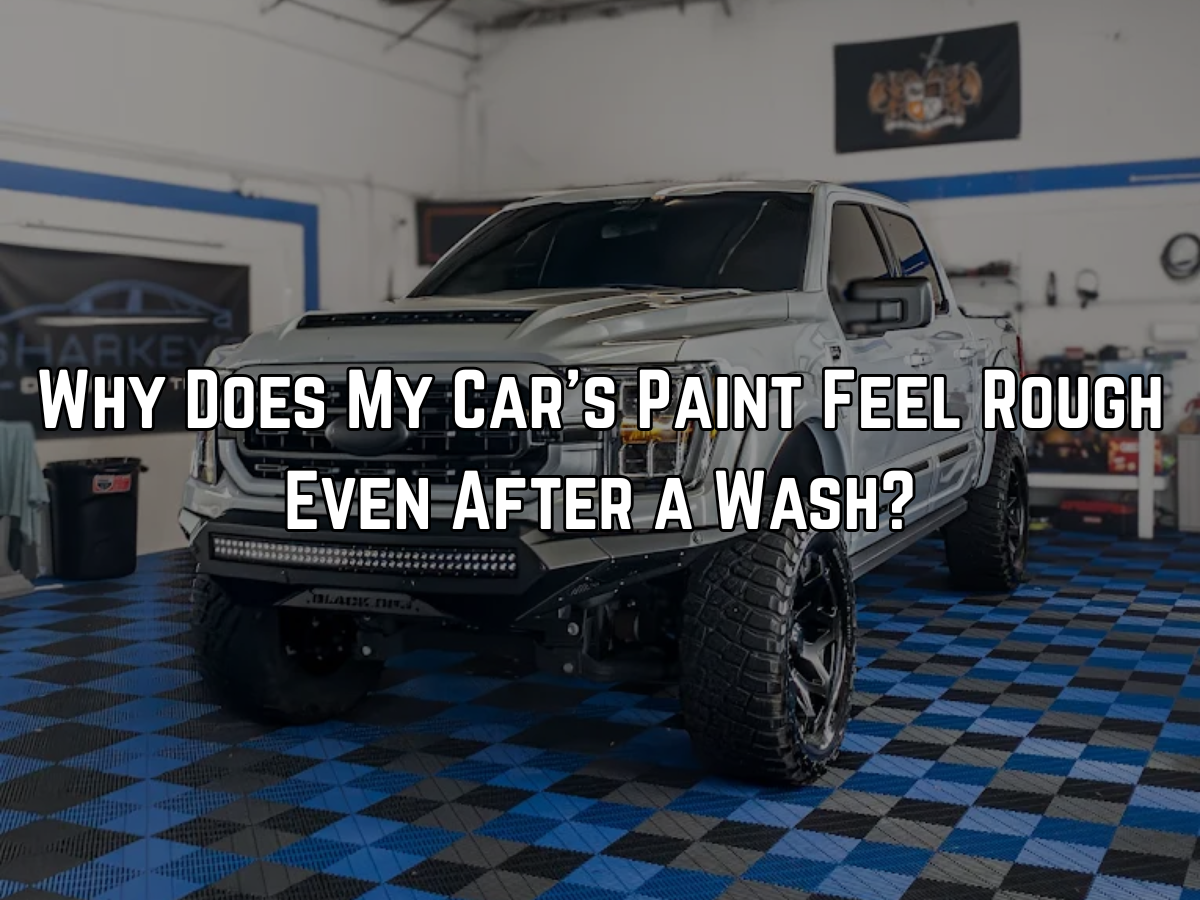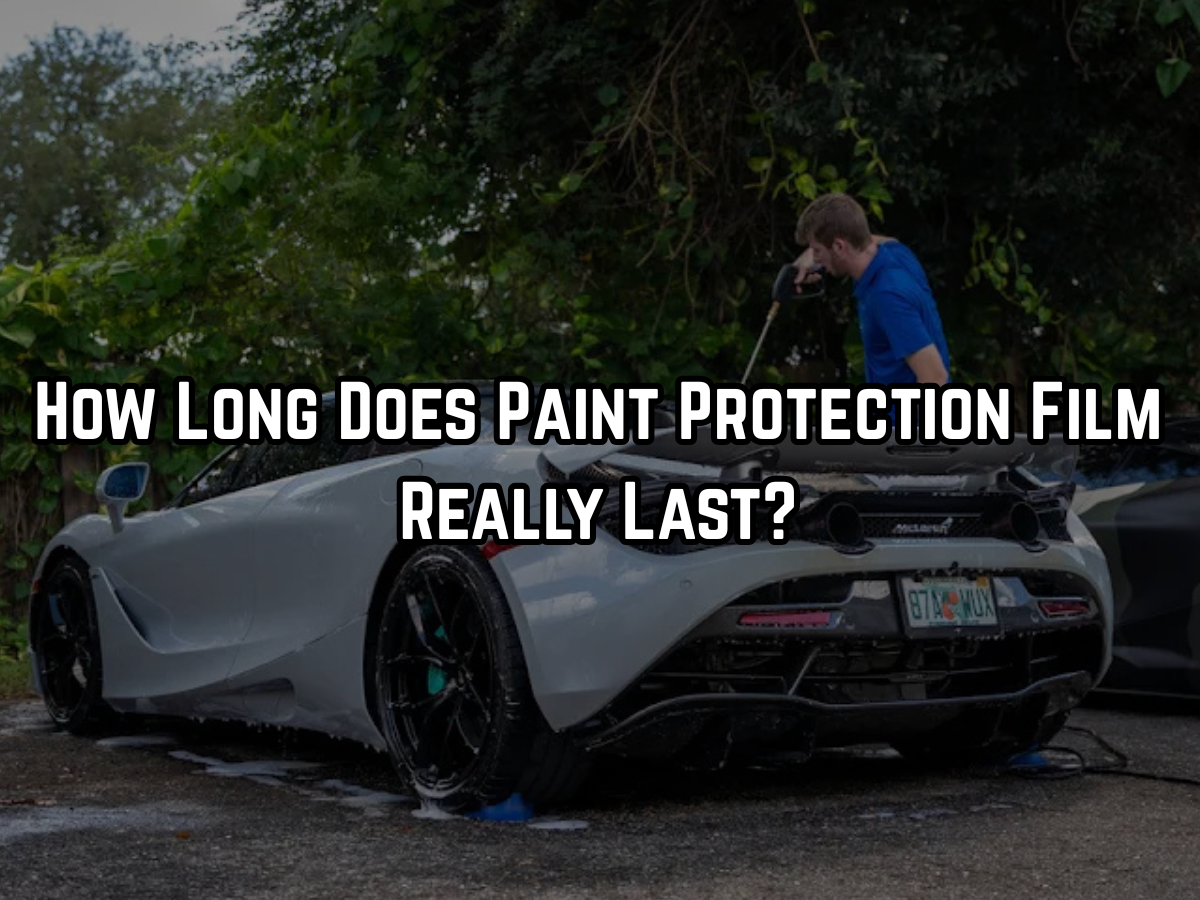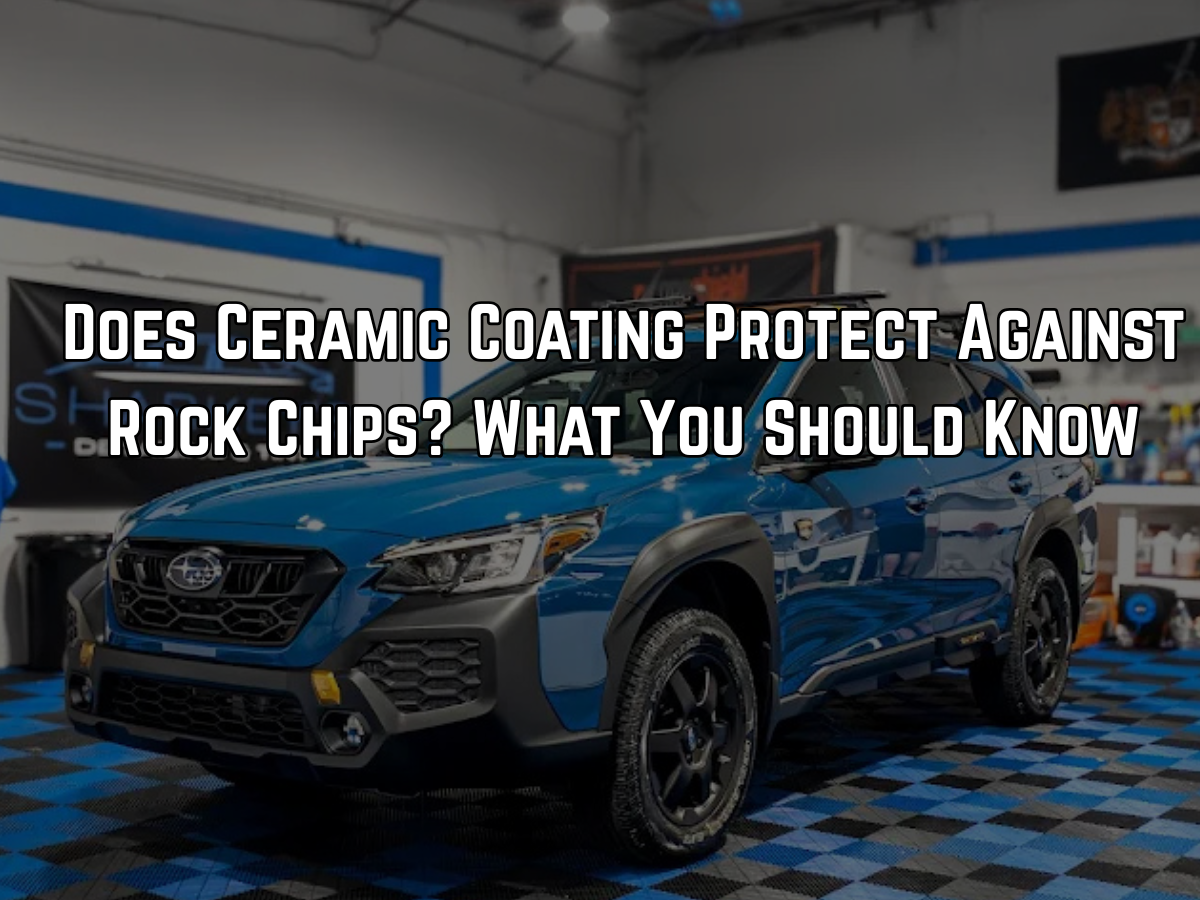Why Does My Car's Paint Feel Rough Even After a Wash?
You just spent 45 minutes washing your car. The water beaded up nicely, you dried every panel carefully, and from a distance, it looks spotless. Then you run your hand across the hood and feel it: a rough, gritty texture that shouldn't be there.
Quick Answer: Your car's paint feels rough after washing because of bonded contaminants like industrial fallout, brake dust, tree sap, and rail dust that regular soap can't remove. These microscopic particles embed themselves into your clear coat, creating that sandpaper-like texture. You'll need a clay bar treatment, iron remover, or professional decontamination to get your paint smooth again.

What's Actually Making Your Paint Feel Rough
That texture you're feeling isn't regular dirt. It's what detailers call "bonded contamination." These are particles that have chemically bonded to or physically embedded into your clear coat. A basic wash removes loose dirt, but these contaminants are stuck tight.
The main offenders include:
- Industrial fallout consists of tiny metal particles from manufacturing facilities that float through the air and settle on your paint. If you live anywhere near factories or industrial zones, your car collects this stuff daily.
- Brake dust doesn't just coat your wheels. Those metallic particles from brake pads become airborne and land on your paint, bonding to the surface through heat and pressure. Every time you brake, you're creating more of it.
- Rail dust affects new cars transported by train. Metal particles from the railway system land on vehicles and can actually rust on your paint surface, creating orange spots that feel rough to the touch.
- Tree sap and tar are sticky organic compounds that washing alone won't touch. They feel different from metal contamination, more tacky than gritty, but they're just as stubborn.
- Overspray comes from construction sites, road work, or even someone spray painting nearby. Those paint particles drift further than you'd think and land on your car.
Why Your Clear Coat Feels Textured
Your car's paint has multiple layers, but what you're touching is the clear coat. It's designed to be smooth and glossy, creating that mirror finish everyone wants. When contaminants bond to this surface, they disrupt the smoothness at a microscopic level.
Here's something interesting: even when you can't see these particles, your hand picks them up instantly. Try the plastic bag test. Run your hand across your paint with a sandwich bag between your skin and the surface. If it still feels rough through the bag, you've got serious contamination that needs handling.
Some people think rough paint means their clear coat is failing. That's rarely true. The clear coat is usually fine. It just has stuff stuck to it that soap and water can't budge.
The Limitation of Regular Washing
Car shampoo breaks down dirt, oils, and road grime, the stuff sitting on your paint, not in it. Soap molecules surround dirt particles and lift them away. But bonded contaminants have a completely different relationship with your clear coat.
Metal particles can partially embed themselves into the clear coat, especially when heat gets involved. Your wash mitt glides right over them. You're cleaning around the contamination without actually removing it.
I've watched people scrub harder, thinking more elbow grease will solve the problem. Bad move. All that does is create swirl marks and potentially scratch your clear coat while the contamination stays exactly where it is.
How Clay Bar Treatment Works
Clay bars work through mechanical abrasion. The clay is abrasive enough to grab and pull out bonded contaminants without damaging your clear coat. When you glide it across lubricated paint, it physically shears off the tops of embedded particles.
You'll feel the difference as you work. Fresh clay glides smoothly when lubricated, but as it picks up contamination, it starts to grab and pull. That's your signal it's working. Fold to a clean section of clay, and it glides smooth again.
Most cars need clay treatment 2 to 4 times per year, depending on where you drive and park. If you're under trees or in an industrial area, you might need it more often.
When Clay Alone Isn't Strong Enough
Sometimes contamination is too aggressive for clay. That's when chemical decontamination becomes necessary.
Iron removers are remarkable to watch in action. Spray them on, wait a few minutes, and watch the solution turn purple or red as it dissolves ferrous metal particles. The chemical reaction breaks down iron oxide (rust) bonded to your paint. This works especially well on white and light-colored cars where you can actually see the orange rust spots before treatment.
Tar removers target petroleum-based contaminants instead. They dissolve sticky compounds so you can wipe them away without scrubbing.
Professional paint correction goes even deeper. It involves machine polishing to level the clear coat and remove contamination that's been there long enough to cause etching or staining.
Keeping Your Paint Smooth After Decontamination
Once you've decontaminated your paint and it feels like glass again, you'll want to maintain that smoothness. Bare clear coat acts like a magnet for new contamination.
Paint protection creates a barrier between your clear coat and the environment. Ceramic coatings, for example, form a hard, chemically resistant layer that makes it much harder for contaminants to bond. When particles do land on your paint, they're bonding to the coating instead of your clear coat.
The difference shows up fast. On an unprotected car, brake dust and fallout start building up within days of washing. On a ceramic coated car, those same particles rinse off much easier during your next wash because they haven't really grabbed hold.
Regular maintenance matters too. Washing your car every 2 weeks prevents contamination from building up to where it becomes harder to remove. The longer particles sit on your paint, the more they bond.
How Your Location Affects Paint Contamination
Where you live directly impacts how fast your paint gets contaminated. Coastal areas deal with salt spray and ocean moisture that accelerates metal particle corrosion on paint. In Florida's climate, especially near the coast, cars develop that rough texture faster than vehicles kept inland.
Industrial zones, airports, and areas near train tracks create higher risk. The concentration of airborne metal particles is simply higher in these environments.
Your parking situation plays a role too. Cars parked under trees accumulate sap, pollen, and organic debris that creates stickiness on the clear coat. This sticky surface then traps other airborne contaminants more effectively.
What Happens If You Ignore Rough Paint
Rough paint isn't just about how your car feels. Over time, embedded contamination causes real damage.
Metal particles sitting on your paint long enough will rust. That rust etches into your clear coat, creating permanent staining that requires paint correction to remove. In bad cases, the etching goes so deep that polishing alone can't fix it.
Organic contaminants like tree sap contain acids. Left on your paint for months, they chemically eat into the clear coat, creating dull spots or hazing that's tough to restore.
Doing It Yourself vs Getting Professional Help
You can handle basic decontamination on your own. A clay bar kit runs about $20 to $30 and includes everything you need: clay, lubricant, and instructions. The process is straightforward. Wash your car first, then work panel by panel with the lubricated clay until the paint feels smooth.
Just pay attention to your technique. Keep the surface wet with lubricant, use light pressure, and keep the clay clean by folding it to expose fresh surfaces. If you drop clay on the ground, toss it. It'll pick up debris that scratches your paint.
Professional detailing takes things several steps further. Detailers use multiple decontamination methods in sequence: iron remover, clay, tar removal, and sometimes a light polish to handle any remaining imperfections. They're also working with professional lighting and trained eyes that spot issues you might miss.
For most car owners, professional decontamination makes sense once or twice a year, with DIY maintenance filling the gaps.
Testing Your Paint's Smoothness
After proper decontamination, your paint should feel like glass. Run your hand across it. There should be zero texture, no bumps, no grit. Just smooth, slick clear coat.
That's your baseline. Contamination is inevitable. You can't stop particles from landing on your car. But keeping up with regular decontamination prevents those particles from accumulating to where they cause problems.
The gap between maintained paint and neglected paint is dramatic. A well-maintained car with regular washing and quarterly clay treatments will still have smooth paint after 5 years. A neglected car? You can feel roughness across the entire hood after just 6 to 12 months without proper care.
Taking Action on Contaminated Paint
Check your paint regularly. Run your hand across different panels. The hood, roof, and trunk get the most exposure to airborne contaminants. If it feels rough, it needs attention soon.
Start with a thorough wash to remove loose dirt, then move to decontamination. Work in shade if possible. Hot panels make the process harder and can affect how products work. After decontamination, consider adding protection to keep that smooth feeling longer.
The rough paint you're feeling isn't permanent damage yet. But it's your car telling you it needs more than just regular washing. Address it now, and you'll maintain that smooth, protected finish that makes your car look and feel the way it should.
For help with paint contamination, decontamination, or long-term protection, professional detailing services can restore that glass-like finish and help you maintain it.




